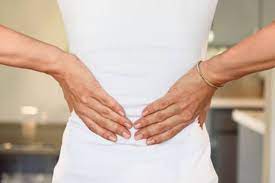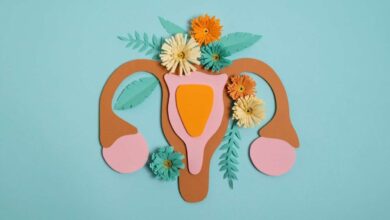Is Back Pain Making You Sick? Long Work Hours, Poor Posture, and the New-Age Lifestyle Linked to the Rising Epidemic
Do you find yourself complaining about your bothersome back ache all the time? You are not alone yourself.
In reality, Indians are seeing an alarming rise in occurrences of spine or back pain, which coincides with the worldwide pandemic of lower back pain.
There are two main patient populations that are seen in orthopedic clinics or by spine specialists. Elderly people with fractures, age-related conditions, or postural concerns make up the first category. The second category, which is more worrisome, is made up of young individuals between the ages of 20 and 40.
Put the blame on the prolonged desk occupations, bad posture when sitting, and lack of exercise. Experts suggest limiting cell phone usage, particularly for kids, careful use of back supports, and ergonomically constructed workstations to stop the worrisome surge.
According to Dr. Vikas Tandon, director of spine services at the Indian Spinal Injuries Center in New Delhi, the rise in spinal issues in India is alarming and mostly a result of our changing lifestyles.
Tandon has seen a 30% rise in people seeking care for spine-related problems during the last two to three years. sedentary occupations, unhealthy lifestyles, chronic stress, and the negative consequences of environmental deterioration are all contributing causes.
The same observation was made by other medical professionals.
According to Dr. HS Chabbra, Chief of Spine Surgery and Rehabilitation at Sri Balaji Action Medical Institute, “a significant increase” in patients seeking care for spine-related problems has been seen. It’s essential to maintain a healthy and active lifestyle, he said, in order to address these difficulties.
Dr. Aman Dua, director of joint replacement and orthopaedics at Fortis Escorts in Okhla, has also observed that between 50–60% of patients present with symptoms of back discomfort, particularly in the lower back and neck.
“Spine-related issues are definitely increasing at a rapid rate,” he added, adding that neck discomfort, which develops as a result of excessive mobile phone usage and results in a disease known as “tech neck,” is another significant presentation.
Low back pain epidemic is “escalating” LANCET
The prevalence of low back pain is “escalating” worldwide, claims a research that was published in The Lancet Rheumatology in June.
“A startling 619 million people worldwide (nearly 10% of the world’s population) experienced low back pain in 2020, and by 2050, that number is anticipated to rise to 843 million,” the report said.
Additionally, it predicted that Asia and Africa will mostly see the increase in instances.
The Global Burden of Disease (GBD) 2021 study’s most recent statistics on the incidence of low back pain demonstrate that Asia and Africa, whose social support networks and healthcare systems are often underfunded and overwhelmed, will see the most significant increases in prevalence.
OPTIONS FOR TREATMENT & PREVENTIVE MEASURES
Since degenerative changes are difficult to cure, experts advise prevention as the best course of action for back discomfort.
Doctors agree that it’s essential to have an active, healthy lifestyle.
“Good or proper sitting posture is of the utmost importance,” said Dua, adding that stretching and exercising on a daily basis, even at work, helps maintain the muscles flexible and healthy.
According to Tandon of the Indian Spinal Injuries Centre, certain categories of individuals are more vulnerable than others, especially those who have desk jobs.
He also suggested doing regular exercise and keeping a proper posture. “This can help prevent spine problems in a big way.”
“For those already affected, early diagnosis and a multidisciplinary approach to treatment, including physiotherapy, lifestyle modifications, and minimally invasive surgeries when necessary, offer hope for recovery,” he said.
According to Chabbra, frequent conditioning exercises like jogging, running, jogging on a treadmill, sports, swimming, aerobics, and walking assist avoid back issues.
Additionally, it is crucial to manage stress using relaxing methods. Early identification and management of the pain as well as its causes, such as poor posture and a sedentary lifestyle, are crucial when it comes to therapy.
A healthy body weight and calcium supplements are two other crucial lifestyle changes.
In order to achieve favorable outcomes, doctors often use non-surgical techniques such pharmaceutical pain management physiotherapy, local heat or cold packs, anti-irritant gel, and lifestyle changes.
Surgery is taken into consideration in severe instances that do not improve or are accompanied by warning signs like fever, loss of bowel or bladder control, etc., according to Chabbra.







